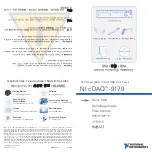
•
About Installing Cards and Associated Components , page 62
•
Installing and Removing an Impedance Carrier , page 66
•
About the SC and SC-SW Cards, page 69
•
Installing an SC or SC-SW Card, page 71
•
Verifying the Installation of an SC or SC-SW Card, page 74
•
About the Fabric Cards, page 77
•
Installing the Fabric Cards, page 79
About Installing Cards and Associated Components
Preventing Electrostatic Discharge
Electrostatic discharge (ESD) damage, which can occur when electronic cards or components are improperly
handled, results in complete or intermittent failures. We recommend the use of an ESD-preventive wrist strap
whenever you handle network equipment or one of its components.
•
Always use an ESD-preventive wrist or ankle strap, and ensure that it makes good skin contact. Connect
the equipment end of the connection cord to an ESD jack (see
Figure 4: ESD Jack, on page 12
) or a
bare metal surface on the chassis (ensure that the chassis grounded).
•
Handle a card by its ejector levers, when applicable, or its metal carrier only; avoid touching the board
or connector pins (see the
Guidelines for Installing a Card, on page 62
section).
•
Place a removed card board-side-up on an anti-static surface or in a static-shielding bag. If you plan to
return the component to the factory, immediately place it in a static-shielding bag.
•
Avoid contact between a card and clothing. The wrist strap protects the board from only ESD voltage
on the body; ESD voltage on clothing can still cause damage.
•
Be careful not to lay any tools on the aluminum honeycomb panel, or insert your fingers into the panel.
Guidelines for Installing a Card
•
Every card has a label (with an arrow) on its faceplate showing which side is up for installation.
•
All card faceplates and card slots on the FCC are labeled with a round purple symbol.
•
Every card has a key mounted on the board that matches a corresponding slot on the chassis side (top
of each card slot). This key-slot mechanism prevents a card from being inserted into the wrong,
non-matching card slot. It also prevents a card from being inserted upside down. If you insert a card into
the wrong card slot or upside down, the key gets blocked against the chassis card guide and will not
slide though the slot. If the key is blocked, remove the card and find the correct card slot.
•
Online insertion and removal (OIR) is supported, enabling you to install a card while the FCC is operating.
OIR is seamless to users on the network, maintains all routing information, and ensures session
preservation. We recommend that you perform a graceful shutdown to shut down a fabric card prior to
removing it from the FCC. See
Steps for OIR Fabric Card Removal, on page 63
.
Cisco Network Convergence System 6000 Fabric Card Chassis Hardware Installation Guide
62
Installing the Shelf Controller Cards and Fabric Cards
About Installing Cards and Associated Components








































